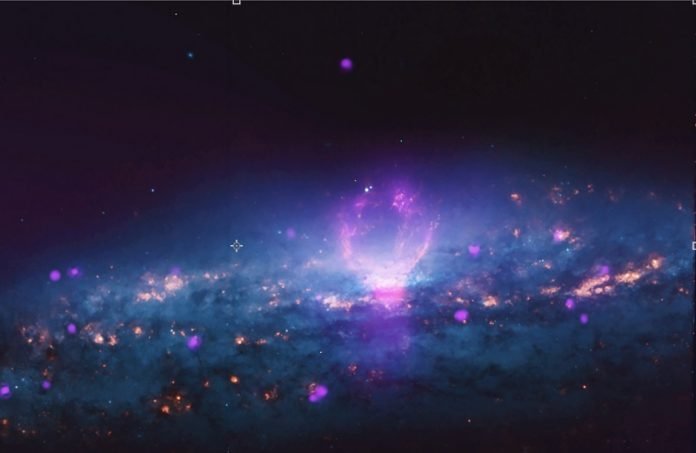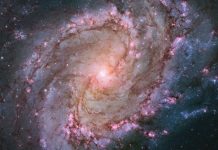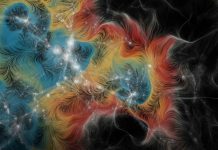
In a new study, researchers found galactic bubbles produce energetic particles.
The research was conducted by A team of astronomers from the University of Michigan.
Previous studies have shown that a galactic bubble is huge and composed of lighter gas. The gas is trapped inside a heavier one.
In the current study, the team examined the bubbles from Galaxy NGC 3079.
It is located approximately 67 million light years from earth.
The galaxy has two galactic bubbles. One is 4,900 light years across, and the other is 3,600 light years. The two bubbles give off the light in the form of X-ray, optical and radio emission.
Previous research has shown that the bubble light was detected by NASA telescopes, such as those at the NASA Chandra X-ray Observatory.
In this study, the team found a cosmic particle accelerator is producing ultra-energetic particles on the edges the galactic bubbles.
The researchers suggest these bubbles may be the source of some cosmic rays observed from Earth.
They explain that as the outer regions of galactic bubbles expand and collide with surrounding gas, these particles can be super-accelerated to energies about 100 times stronger.
The charged particles scatter and bounce off magnetic fields in the shock waves. Some particles may escape and even strike Earth’s atmosphere as cosmic rays.
The team also found a large number of radio waves generated by one of the galactic bubbles.
This suggests that the X-ray emission is electrons swirling around the magnetic fields of the shock waves of the bubble.
The electrons are radiated by a process called synchrotron radiation.
The study provides the first direct evidence of synchrotron radiation in high energy X-rays from a massive galactic bubble.
The future researcher will examine why synchrotron emission is only detected from one galactic bubble.
The lead author of the study is Jiangtao Li, an assistant research scientist in the Department of Astronomy at the University of Michigan.
The study is published in Astrophysical Journal.
Copyright © 2019 Knowridge Science Report. All rights reserved.



